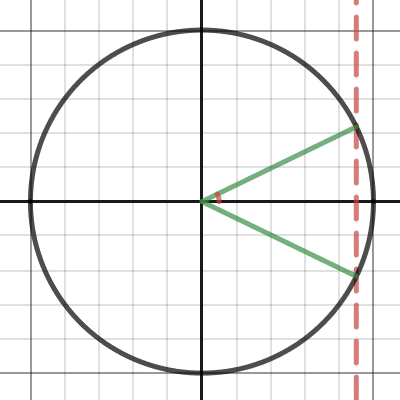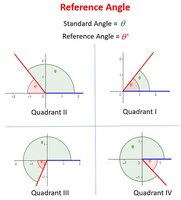Now that you know what a reference angle is, we can do this. Note: I changed the angle variable from x to θ because I want to talk about x as a coordinate, instead. I'm using function notation cos(), also.
As a terminal ray rotates through one complete revolution 0 < θ < 2pi, it will designate two angles whose cosine is 0.9 and two angles whose cosine is -0.9. Remember, the number cos(θ) is the x-coordinate of the point where ray intersects the unit circle. There are two points on the circle whose x-coordinate is 0.9 and two points whose x-coordinate is -0.9.
When cosine is positive (like 0.9), then the terminal ray must be in QI or QIV because those are the two quadrants where x-coordinates are positive.
When cosine is negative (like -0.9), then the terminal ray lies in QII or QIII because x-coordinates are negative there.
So, we need to find the angles in QI and QIV where cos(θ)=0.9. The reference angle is the angle in QI -- a calculator's inverse cosine function gives us that angle.
arccos(0.9) ≈ 0.45103 (that's about 25.8º)
Now, what is θ in QIV? Can you use the reference angle, to determine it? Review the prior image, if you need to, to see the reference angle drawn (in red) for an angle in QIV.
To calculate θ, what gets subtracted from what? If you do the subtraction, round the result to four places.
?


